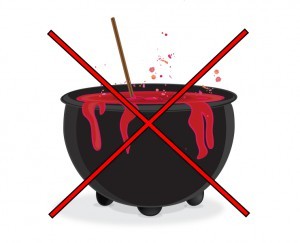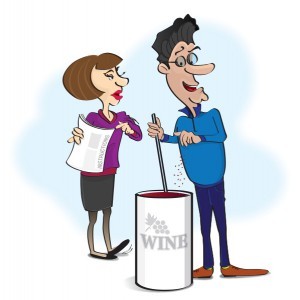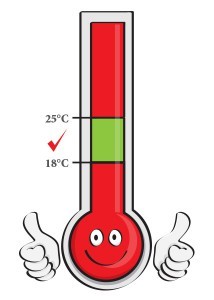Craft & Cork >> Winemaking

Common craft winemaking mistakes (and how to avoid them!)
The winemaking team at RJS Craft Winemaking has been helping craft winemakers perfect the art of making craft wine for over 50 years. We have seen many amateur winemakers make outstanding, even award winning, craft wines. However, we have also seen our fair share of winemaking blunders over the years. Here is a list of the most common mistakes made by craft winemakers, and more importantly, what you can do to avoid making them yourself!
Poor Cleaning & Sanitation
Most winemaker’s know they need their equipment to be sparking clean before making their wine. But, too many amateur winemakers mistakenly think that cleaning and sanitizing are the same thing. Let us assure you they are very DIFFERENT! While cleaning with detergent will get rid of visible residue, sanitizing goes a step further and requires treating equipment with a substance that will inhibit or kill bacteria.
There are several sanitizers you can use, including metabisulphite solution, and they all work a little differently. Clean and sanitize everything that touches your wine — fermenters, carboys, hoses, thermometers, spoons. It’s easy and worth it: 90% of winemaking failures in wine can be traced to poor cleaning or faulty sanitation.
 Using the wrong type of equipment
Using the wrong type of equipment
When you start making your wine, don’t just grab anything you see around the house—like your Grandma’s old pickle jars, peanut butter pails, garbage cans, or wooden spoons. These can’t be sanitized easily and are very likely to taint your wine. While we appreciate your resourcefulness, proper winemaking equipment is made of food-grade plastic or glass and is designed to give you the best results possible.
 Ignoring or Changing the Instructions
Ignoring or Changing the Instructions
No one likes to be told what to do, but our development team has studied our wine kits endlessly… so trust us! Follow all instructions carefully as these are proven procedures for getting the best possible results from the ingredients in the kit.
Not adding Sulphite
No one wants to drink wine that tastes off. Sulphite prevents your wine from spoiling, so please don’t leave it out! Bad things can happen to your craft wine if you leave out the Sulphite.
 Not adding yeast correctly
Not adding yeast correctly
We recommend sprinkling the yeast over the surface (at 18 to 25 degrees Celsius) juice and not stirring. If the temperature is wrong, the yeast won’t be happy. And if you stir it in, you can suffocate it.
Not Stirring Enough
Eventually you will need to clear your wine by adding natural substances like chitosan, keiselsol, and a clay called bentonite. These come with the kit and need to be dispersed thoroughly throughout the wine. This means stirring….and stirring….and stirring. Even if your arm gets sore, keep stirring!
Not Topping Up Your Wine
Don’t forget to top off your wine to prevent it from oxidizing. Minimizing the air space above the wine is crucial to keeping your batch of craft wine delicious.
In our decades of craft winemaking experience, these are the issues that are most likely to cause a batch of wine to go sideways. By avoiding these common mistakes you’re one step closer to a beautiful batch of your very own craft wine.


Comments are closed.